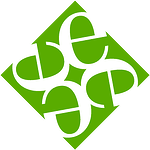Self-Directed IRAs Explained

Estimated reading time: 5 minutes
[Last Updated: July 19, 2022]
What if your IRA could invest in real estate, precious metals, private equity, or other alternative assets? The good news is, it can.
With a self-directed IRA (SDIRA), you have the power to turn your retirement funds into a vehicle for alternative investments.
Key Takeaways
- Self-directed IRAs allow investors to hold alternative investments to take increased control over their financial future.
- IRAs offered by large brokerages generally do not allow alternative investments.
- Investing in alternative assets empowers investors to diversify their portfolios and leverage their expertise.
A Brief History of Self-Directed IRAs
In 1974, when Congress passed the Employee Retirement Income Security Act of 1974, or ERISA, the IRA was born. This type of individual retirement account was created for workers to have a tax-advantaged way to save for retirement.
These tax-advantaged accounts were instantly popular, and by the end of 1975, workers had contributed 1.4 billion to their IRAs. While the first IRAs were offered by banks, financial companies and trust companies were also allowed to provide IRAs. Most of the first IRA providers only offered traditional investments like stocks and bonds. However, because the IRS regulations only prohibited investing in life insurance, collectibles, and later S-corporations, alternative assets were viable investment options.
Many investors knew investing in alternative assets could provide incredible potential. If they were able to choose investments that leveraged their expertise, they could diversify their accounts. This opportunity gave rise to self-directed IRA providers, and Entrust was one of the first. Hugh Bromma started Entrust more than 40 years ago because he believed empowering individual investors to self-direct their retirement accounts could be life changing. Today Entrust has provided self-directed account administration for over 45,000 investors, and we currently have 5 billion assets under administration. As of 2022, there are over 13 trillion dollars in IRAs, but it is estimated that only 2% of those funds are invested in self-directed accounts.
What Does Self-Directed Mean?
Self-directed means account holders choose the assets they invest in with their retirement accounts. It also means investors are responsible to do all the due diligence for their investments and understand the rules and regulations that govern IRAs.
The IRS requires all self-directed accounts to be administered by an SDIRA provider. They provide recordkeeping services, but they are not able to advise investors or offer investment recommendations.
The term “self-directed” is sometimes used by brokerages and larger financial institutions. These larger brokerage “self-directed accounts” allow investors to select their own assets, however, they can only choose from a pool of standard mutual funds.
Truly self-directed accounts, like the ones offered by The Entrust Group, allow investors to diversify their portfolios and invest in alternative investments, such as real estate, private equity, precious metals, and more.
Sometimes investors initially believe that a self-directed IRA is completely different from the IRA they already have with a bank or brokerage. But SDIRAs are simply IRAs - their biggest difference is the assets that they’re invested in. However, in the eyes of the IRS they are the same - making them subject to the same rules, regulations, and tax-advantages. The other key difference is that they are managed and maintained (hence the “self-directed”) by their holders, rather than by a financial institution. In other words, if you want total control of what, when, and how your retirement funds are invested, an SDIRA could be exactly the tool you need.
What Are Alternative Assets?
Alternative assets include all investments outside of traditional asset classes, like stocks and bonds. As you might imagine, this is a very large (and growing) category of assets and provides almost endless possibilities for investors. Alternative assets are typically organized into categories including real estate, private equity, private lending, precious metals, and cryptocurrency. Inside each of these categories, there are many types of investments.
With an SDIRA, you can invest in everything from gold and silver, to mortgage notes, bowling alleys, rental properties, food trucks, office buildings, and even vineyards. If you want to learn about more alternative investment options that can diversify your portfolio, check out our 90 Things You Can Invest in with an SDIRA.
What Are the Pros and Cons of SDIRAs?
Investing with a self-directed IRA allows you get to pick your investments from the wide world of alternative assets. Some of the pros of investing with an SDIRA are the potential to- diversify your portfolio
- leverage your expertise
- invest as hedge against inflation
- invest for potentially for higher returns
Being able to choose your investments and manage your account, gives you greater control over your financial future.
Using an SDIRA, however, requires that account holders do their own due diligence for any investments. It is also important that investors understand the rules and regulations to avoid prohibited transactions. Investors interested in learning more about the rules and regulations for SDIRAs can download our Prohibited Transaction Flowchart.
What Kind of Self-Directed Accounts Can I Open at Entrust?
Investors have the option to open a traditional IRA, Roth IRA, individual 401(k), ESA, or an HSA. Entrust also offers small business accounts including a SEP and a SIMPLE IRA. If you want to understand the different types of accounts and their tax advantages, the Entrust Account Guide explains each of them in detail.
Can I Use an LLC to Invest with My SDIRA?
Some providers offer a self-directed IRA LLC structure. This is different from using an SDIRA to invest in a business that is structured as an LLC.
Investing in an LLC is simply investing in an asset that is an LLC. Investing through an LLC, means that your SDIRA establishes and owns an LLC. The SDIRA-owned LLC can then invest in any asset.
Some investors choose the self-directed IRA LLC structure for greater flexibility and quicker transactions. It is particularly popular for real estate investors because it provides checkbook control. This structure can also provide some limited liability protection. Learn more about this investment strategy on Entrust’s LLC page.
How Can I Fund an SDIRA?
Funding your SDIRA is simple. Investors can transfer or rollover an IRA or even an old 401(k) from a former employer. They can also contribute to an SDIRA based on the contribution limits allowed by the IRS each year. Learn more about the ways to fund your account in our article about The Difference Between a Transfer and Rollover.
Discover how you can open an account and begin investing with an SDIRA today.
Investing in alternative investments and self-directing your financial future is only one step away. Let Entrust help empower you to create the investment strategy of your dreams.





























0 Comment